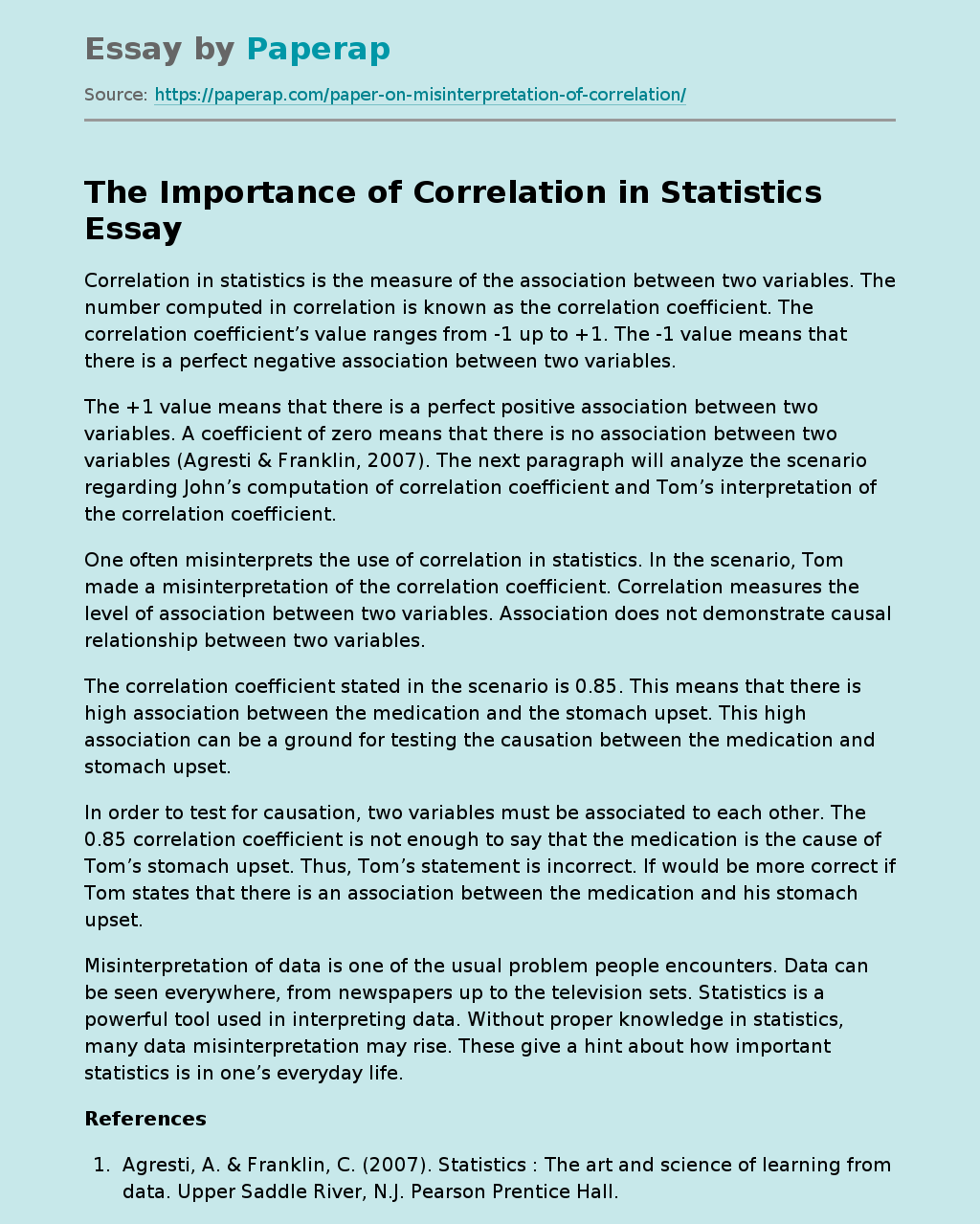The Importance of Correlation in Statistics
Correlation in statistics is the measure of the association between two variables. The number computed in correlation is known as the correlation coefficient.
The correlation coefficient’s value ranges from -1 up to +1. The -1 value means that there is a perfect negative association between two variables.
The +1 value means that there is a perfect positive association between two variables. A coefficient of zero means that there is no association between two variables (Agresti & Franklin, 2007). The next paragraph will analyze the scenario regarding John’s computation of correlation coefficient and Tom’s interpretation of the correlation coefficient.
One often misinterprets the use of correlation in statistics. In the scenario, Tom made a misinterpretation of the correlation coefficient. Correlation measures the level of association between two variables. Association does not demonstrate causal relationship between two variables.
The correlation coefficient stated in the scenario is 0.85. This means that there is high association between the medication and the stomach upset. This high association can be a ground for testing the causation between the medication and stomach upset.
In order to test for causation, two variables must be associated to each other. The 0.85 correlation coefficient is not enough to say that the medication is the cause of Tom’s stomach upset. Thus, Tom’s statement is incorrect. If would be more correct if Tom states that there is an association between the medication and his stomach upset.
Misinterpretation of data is one of the usual problem people encounters. Data can be seen everywhere, from newspapers up to the television sets.
Statistics is a powerful tool used in interpreting data. Without proper knowledge in statistics, many data misinterpretation may rise. These give a hint about how important statistics is in one’s everyday life.
References
- Agresti, A. & Franklin, C. (2007). Statistics : The art and science of learning from data. Upper Saddle River, N.J. Pearson Prentice Hall.
The Importance of Correlation in Statistics. (2019, Dec 05). Retrieved from https://paperap.com/paper-on-misinterpretation-of-correlation/

